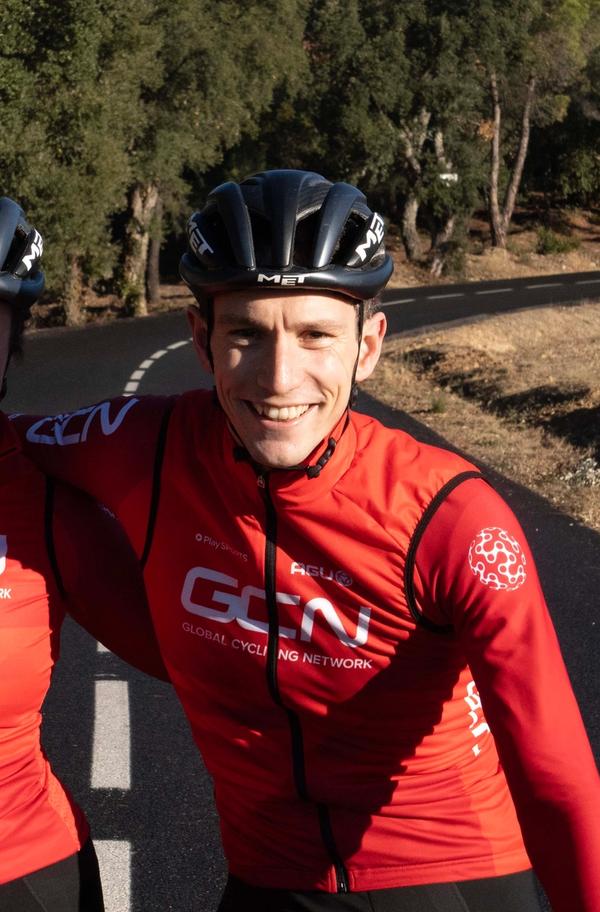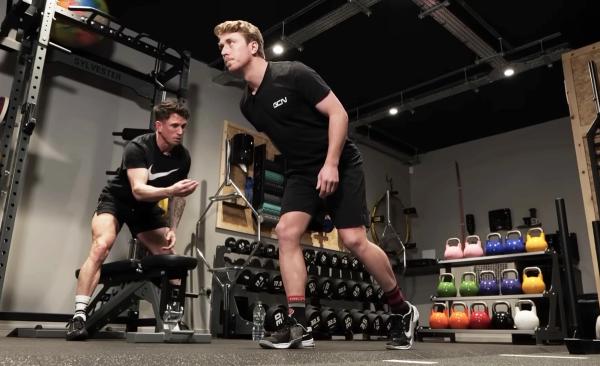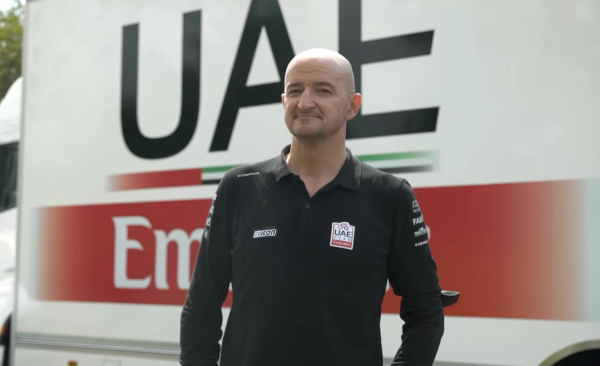Why riding slower makes you faster: the secrets of zone 2 training
Tadej Pogačar’s coach on the benefits of zone two riding and why cyclists should alter their training to target it.
James Howell-Jones
Junior Writer
Training: it’s all about pushing your body to the limit. No pain, no gain, right?
That’s a trap many of us have fallen into, riding at high intensities every session in a bid for maximum gains. Following this approach completely neglects lower-intensity riding, though, and that could hamper your training.
The benefits of lower-intensity training, specifically in zone two, are becoming better understood and we wanted to find out more. And who better to give us the lowdown than Dr Iñigo San Millán, a specialist in physiology and metabolism in health and disease based at the University of Colorado, and Tadej Pogačar’s coach. GCN's Si Richardson caught up with him recently to learn everything he could about training in zone two.
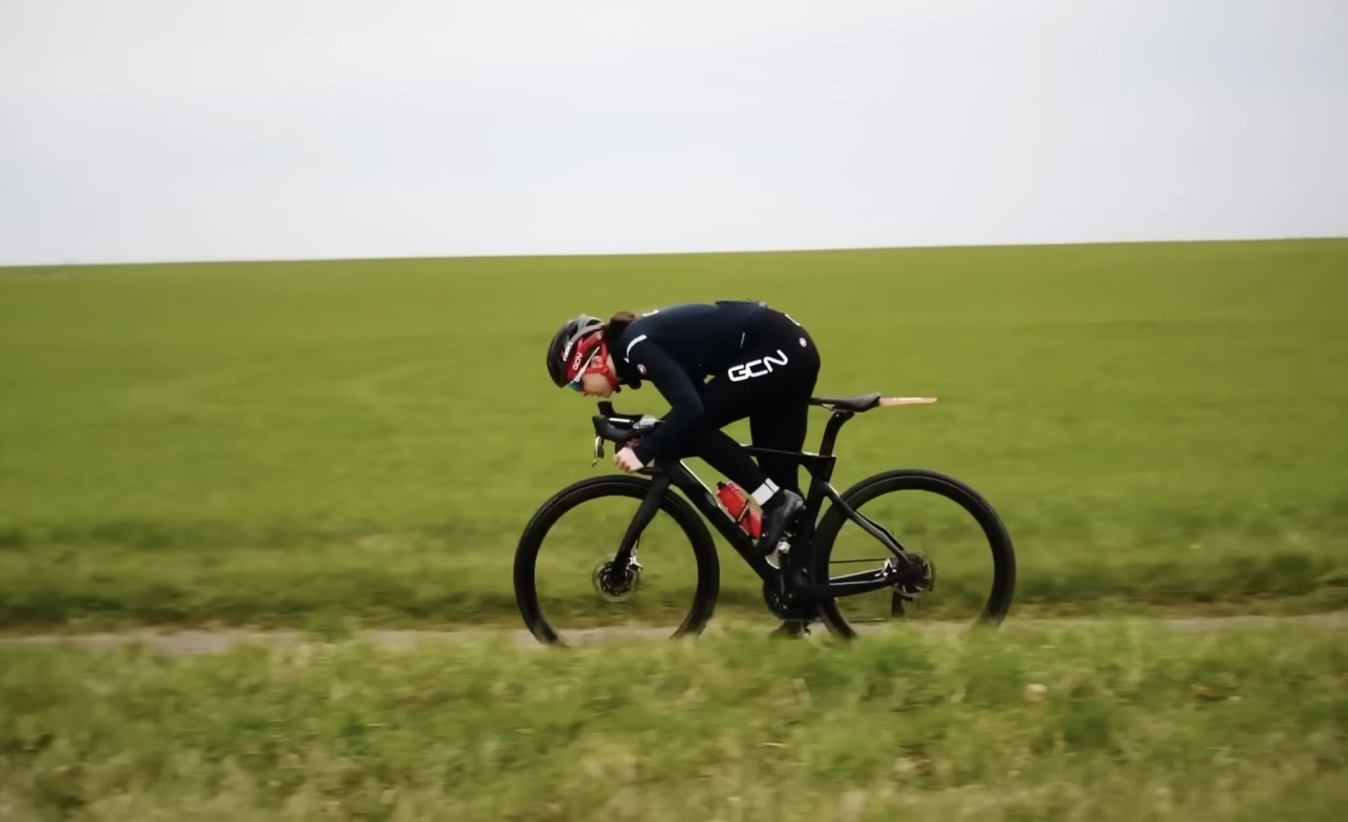
© GCN
Training hard feels productive, but maybe there's a better way
Si Richardson: Can you explain how riding slower can make you faster?
Dr San Millán: It's a concept that has been around for many years. People win races while riding at high intensity so, intuitively, they train at that intensity.
The problem in cycling and in sports in general is that muscle bioenergetics don’t work that way. Of course you win races at a high intensity but, for that, you need to have a very good aerobic base.
At high intensity you use a lot of glucose during exercise, for energy purposes. Every time you use glucose, you also produce lactate. Lactate is produced in the fast-twitch muscle fibres which are the ones that you deploy when you do high-intensity exercises. This lactate needs to be cleared and the way to do that is by developing the slow-twitch muscle fibres. That lactate then passes from the fast-twitch muscle fibres to the adjacent slow-twitch fibres, where it will be utilised for energy purposes.
And the best way to develop slow-twitch muscle fibres is to specifically stimulate them through training.
Si: How do those who aren’t familiar with training zones identify low and high intensity efforts?
Dr San Millán: The best way is via a metabolic test in a laboratory or a field test where you can use lactate to see mitochondrial function and analyse whether you're using fat or carbohydrates. These methods calculate intensities really well.
If you don't have access to these, I would recommend simply going by feeling. It's going to be accurate and more accurate than most of the heart-rate formulas or an FTP test. It’s usually not very accurate to base zone two off of your FTP because it’s a fixed percentage and it might be off.
When we talk about zone two, it’s not a walk in the park. As a general guide, if you can maintain an easy conversation on the bike, then you're definitely riding at zone one. If it's difficult to maintain a conversation but you can still do it, you’re likely to be around zone two. If it’s really difficult to maintain a conversation, you're entering into a higher intensity. This old-school talking test works really well.
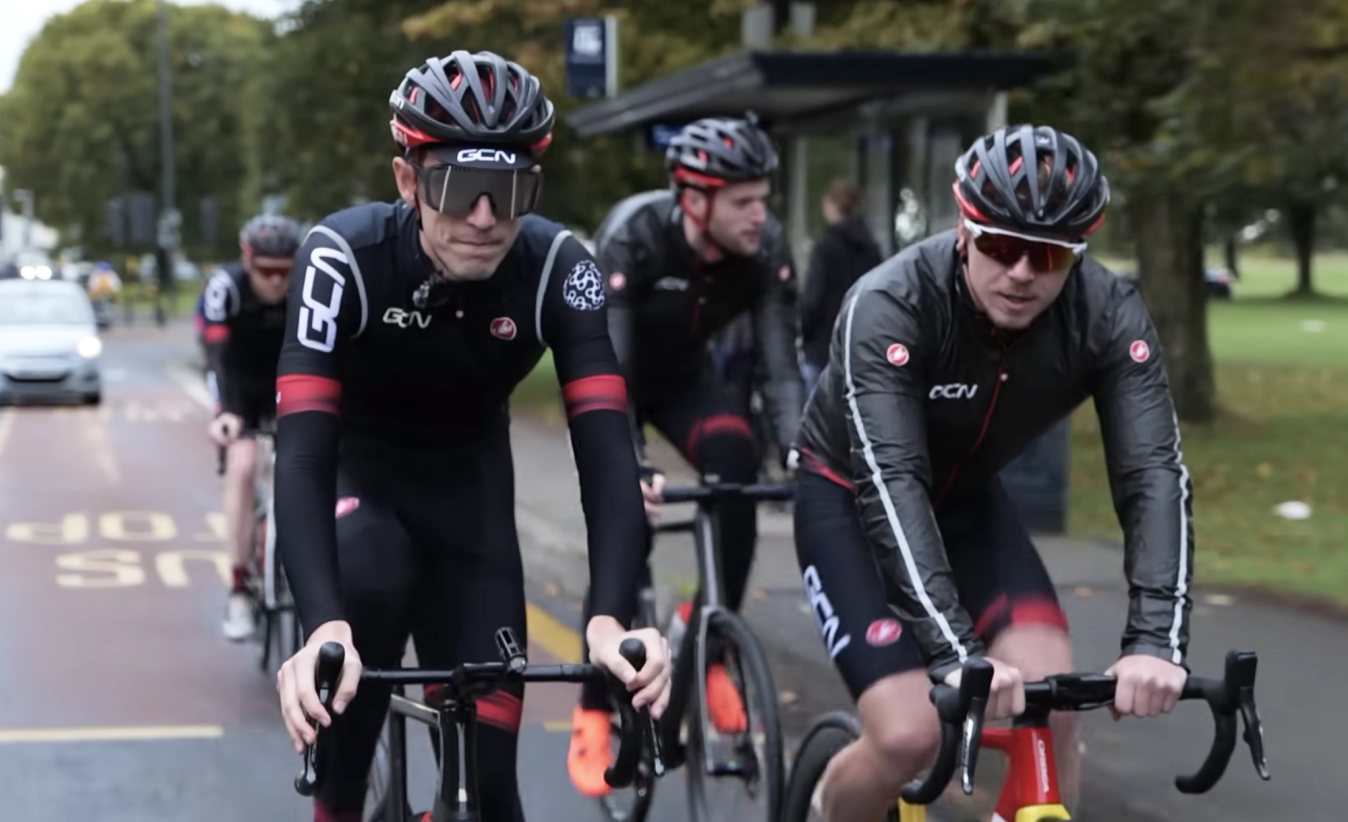
© GCN
If you can just about hold a conversation, you're in zone 2
Si: So, how much zone two training should cyclists do in a week?
Dr San Millán: As a minimum to improve, you need three days a week. With two days you can maintain fitness but, if you want to improve, you need three days a week.
Between three to four ideally but it depends on the time of the season and which training block you’re in. If races are approaching and you’ve done a block of zone two training, then you also need to train at higher intensities. As we said at the very beginning, that's where races are won.
Si: What about for ‘weekend warriors’ or time-crunched cyclists who, for example, only have time to ride for five hours per week? It often feels like riding at zone two isn’t constructive if you’re short on time.
Dr San Millán: It may not seem that constructive but, even for ‘weekend warriors’, doing three to four days a week at zone two works really well.
For example, if you have four days a week to train, you can do three of those days at zone two, even if you only have an hour and a half or less per ride. People often think, ‘I only have an hour and a half to train each day so I'm going to go 100 per cent at it’. That may lead to fast but not super high improvements. Then you're going to plateau and eventually deteriorate. That’s because, as we covered earlier, you’ll be developing the glycolytic fibres very well but you're not developing the other slow-twitch fibres.
Si: Are short bursts of high-intensity effort, for example sprinting to a street sign, detrimental to zone 2 training?
Dr San Millán: You can do that but try not to go over the top and enter or go over your lactate threshold. Once you engage those energy systems, you start producing a lot of lactate, a lot of what's called catecholamines, plus there’s a hormonal and metabolic response. It might take you a good 20 or 30 minutes to go back to a baseline where you can stabilise again. It's like a shock to the system.
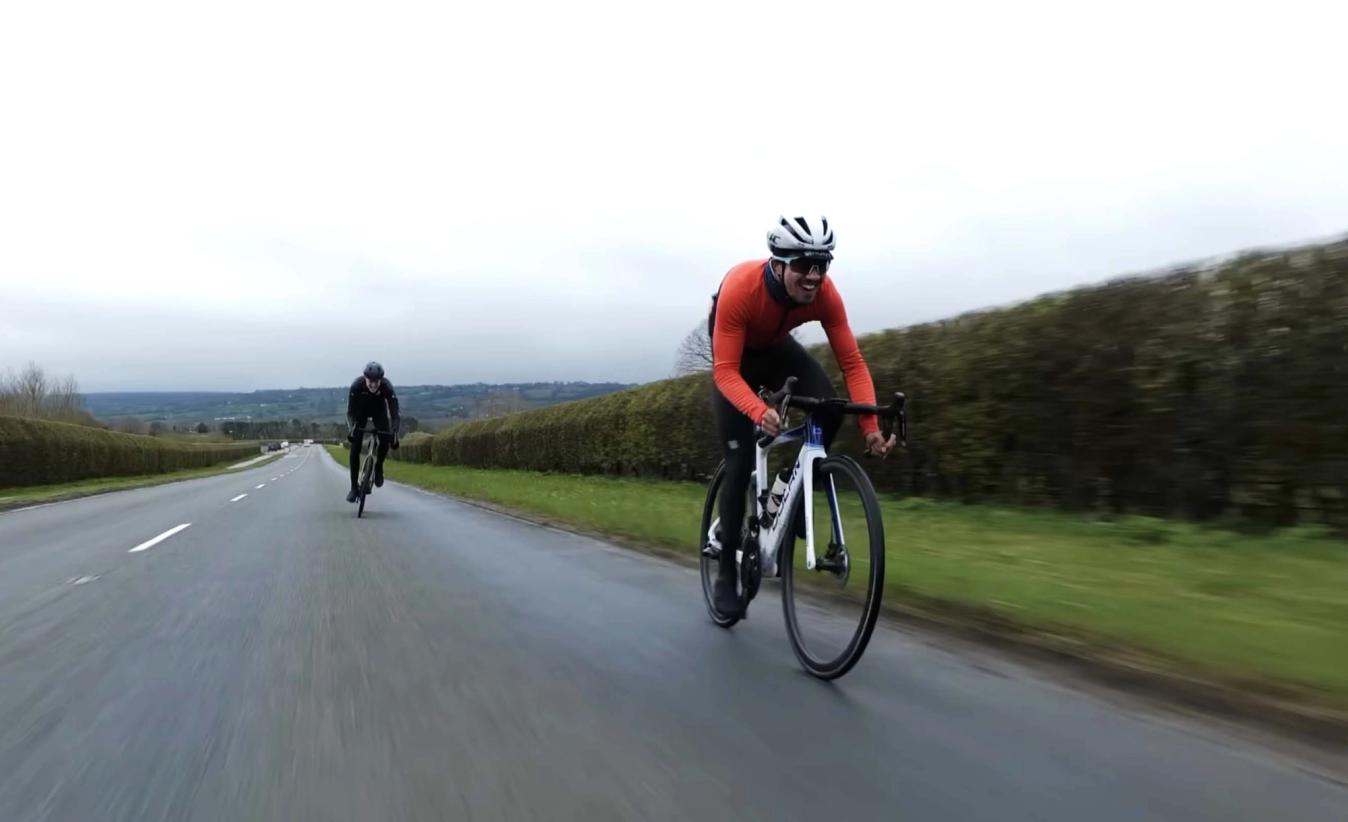
© GCN
Resist the town sign sprint if you're on a zone two ride
Si: Targeting zone two and zone four is a form of polarised training that a lot of people advocate. But is there any benefit to training at zone three?
Dr San Millán: Training is about targeting bioenergetics and the important energy systems. That’s why it’s important to ask which energy system you want to stimulate on a given day. Do you want to stimulate the oxidative metabolism which would be your zone two? The glycolytic metabolism which is zone four? Or do you want to stimulate your sprint metabolism?
Zone three is something in the middle as you never ride at that intensity in a competition. So, especially if you don't have much time, you need to be laser focused on the energy system that you want to target. Don’t target something that is in the middle where not much happens at both a bioenergetic and competition level. Races aren’t won in zone three.
Si: You coach many of the big stars like Tadej Pogačar. What is their training volume like when targeting zone two?
Dr San Millán: It’s a lot of hours per week. We also reset training zones as you might know your zone but, if you take two or three weeks off, you deteriorate. Your zone two now is going to be different in two months, or in a month, or even in three weeks. That's why we do testing to fine-tune those specific intensities.
Si: A lot of your work is about more than cycling performance. Can you explain the importance of mitochondrial function for general health and wellbeing?
Dr San Millán: When I came to the School of Medicine at the university 14 years ago, I had a lot of interaction with patients and different departments. I was looking at metabolic diseases from cardiovascular disease to type 2 diabetes and cancer. That's where I started to see that there is a lack of understanding about many of the mechanisms behind the pathogenesis of these diseases. More and more people, as they dig in and research, are stumbling upon metabolism at the cellular level.
That's why we work with elite athletes as they are the perfect machines and have the perfect metabolism. I always say that you can’t understand imperfection if you don't know perfection in the first place. With lessons learned from elite athletes, we can start to understand the pathogenesis of some diseases where mitochondrial impairment or dysfunction is at the epicentre.
That is what we're seeing in so many diseases nowadays, so my focus now is to try to understand this better. We're finding new things and we have a bunch of studies that we need to publish.
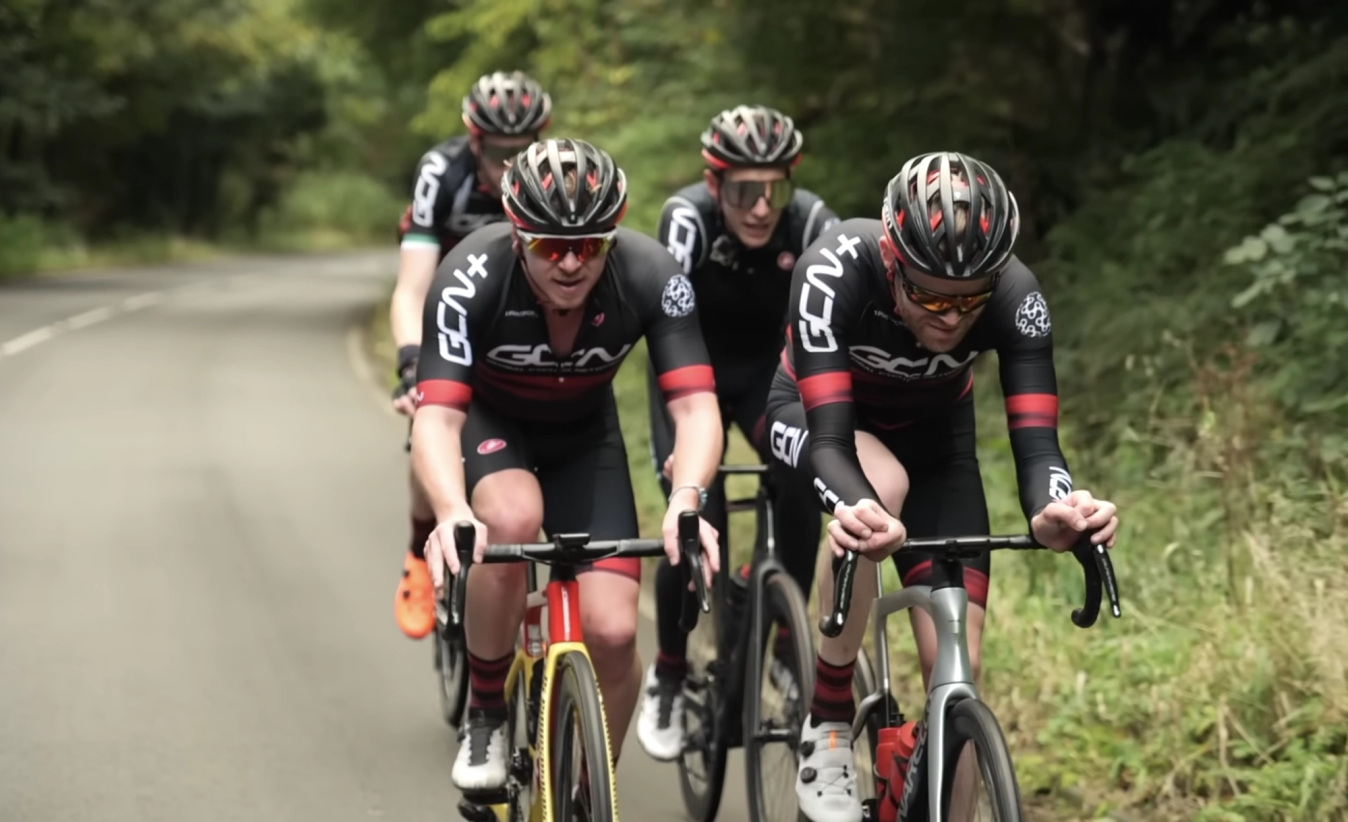
© GCN
Consistent zone 2 training is the best way to build fitness
If you didn’t believe in the benefits of zone two training before, the words of Dr Iñigo San Millán are enough to convert the most ardent doubter. While altering your training to target more of zone two won’t turn you into the next Tadej Pogačar, it should lead to big improvements in your performance. So maybe try going a little easier on your next training effort.
